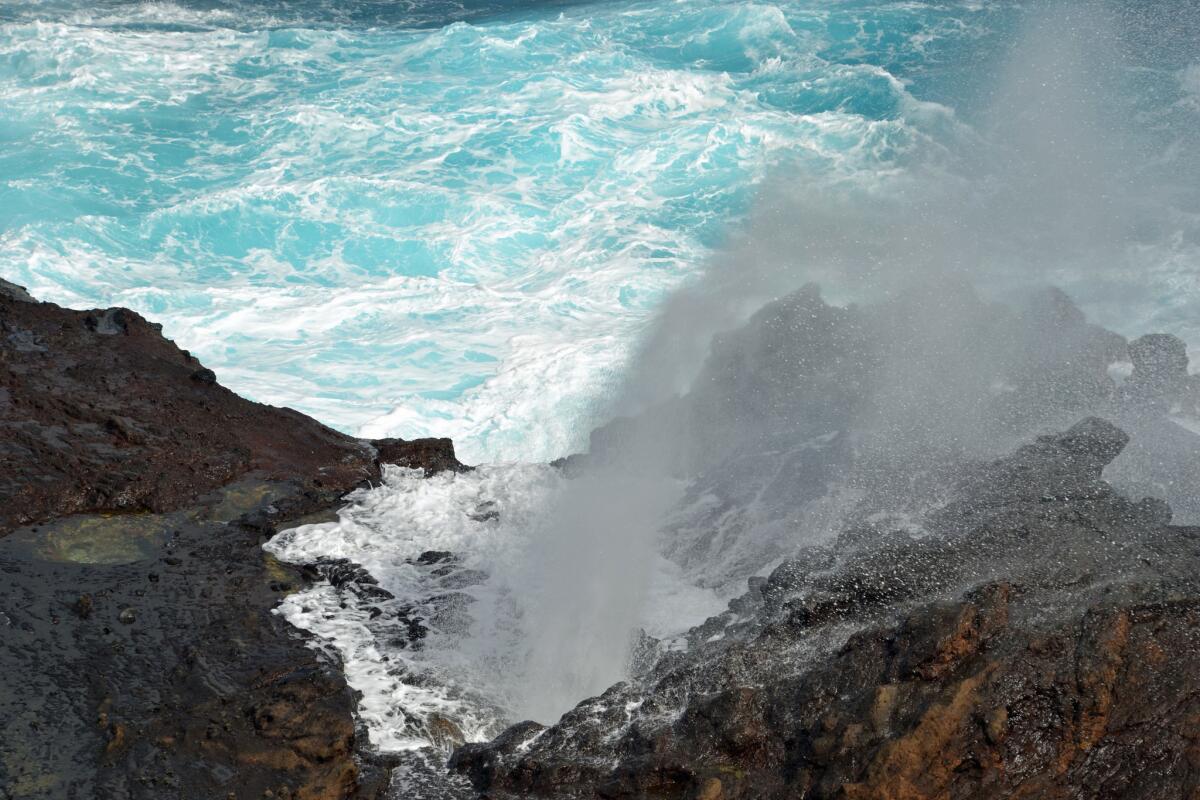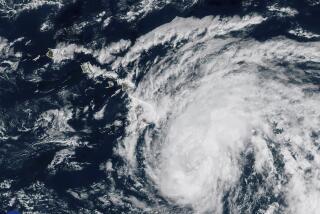One way to beat the Southland heat: a look at a very cool Oahu blow hole

A little wind, a little spray from Halona Blow Hole on Oahua can take the edge off a beastly hot day.
As the mercury creeps toward 100 in the Los Angeles area, we could all stand a cooling thought.
Here’s one: Halona Blow Hole on Oahu.
At the end of a longish day on Oahu earlier this month, I need a place to cool off. Even paradise gets hot and humid, and downtown Honolulu was doing its best imitation of a sauna.
I headed east about 14 miles from downtown on Highway 72, past Hanauma Bay to the Halona Blow Hole. Tourists lined the rail to get a look at the water shooting skyward, thanks to a hole in the top of this sea cave.
Scott Rowland, professor of geology and geophysics at the University of Hawaii at Manoa, explained the phenomenon this way in an email: “When a wave crashes against the mouth of the sea cave, the air in back is pressurized and shoots out of the hole in the top, taking water with it and producing the whoosh of spray.”
We had a few whooshes of spray the day I was there, but nothing spectacular. (Check out the video above, a series of stills with a bit of bouncy music.) I’ve seen better sprays at Spouting Horn on Kauai, but the thrill, no matter where you are—and there are many such blowholes around the world, Rowland noted—was wondering whether the next wave would bring a giant plume.
Best of all, it was cool and windy, a welcome counterbalance not only to the weather but also to the contemplation of the hot and steamy cinematic smooch Burt Lancaster and Deborah Kerr at the nearby “From Here to Eternity” beach (a.k.a. Halona Beach Cove).
Very hot. I mean the weather, which feels hotter in Honolulu than it used to, thanks to a decrease in northeasterly tradewinds, according to a University of Hawaii study published in the Journal of Geophysical Research.
In the last 40 years, the number of days those tradewinds blow has decreased by 81 days, the 2012 study said.
Very hot indeed.
Follow us on Twitter at @latimestravel
More to Read
Sign up for The Wild
We’ll help you find the best places to hike, bike and run, as well as the perfect silent spots for meditation and yoga.
You may occasionally receive promotional content from the Los Angeles Times.







